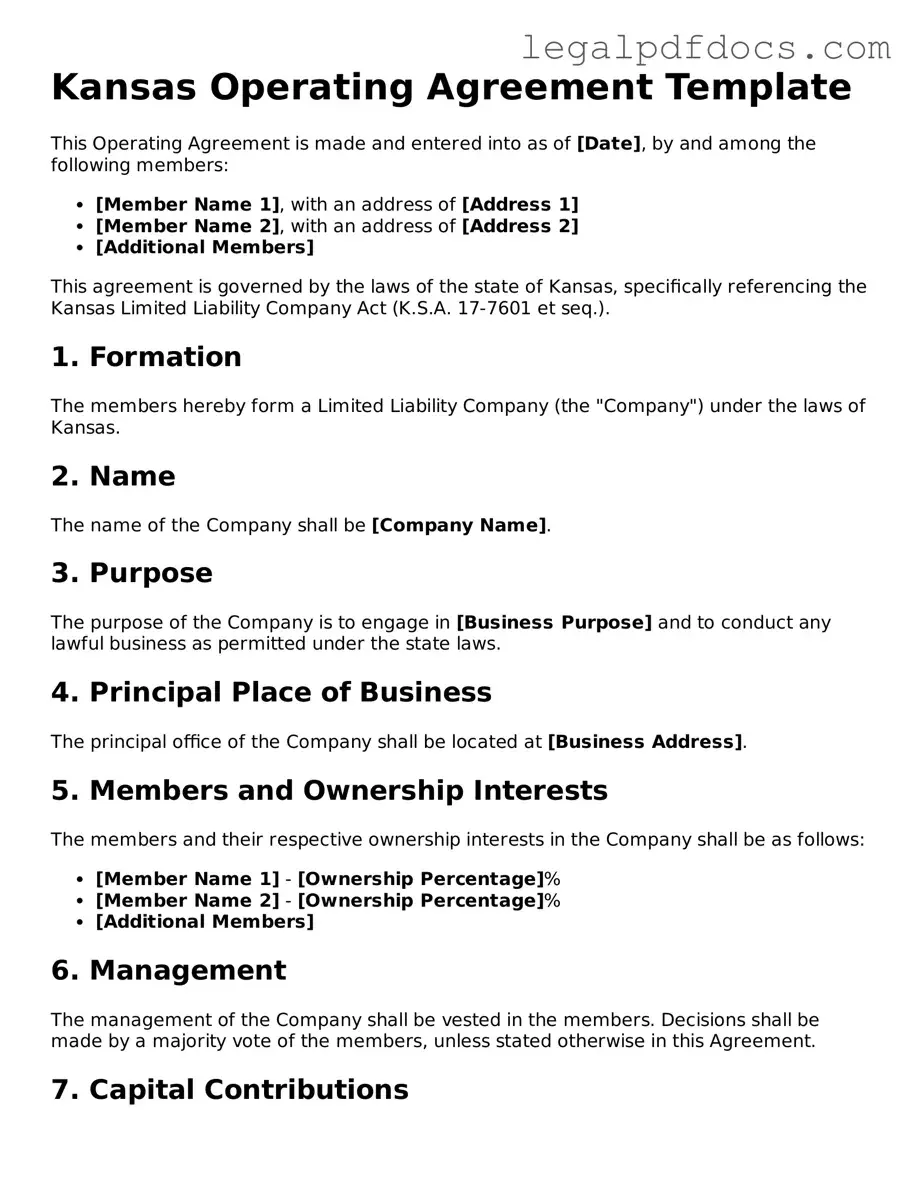Official Operating Agreement Form for Kansas
The Kansas Operating Agreement form is a crucial document that outlines the management structure and operational guidelines for a limited liability company (LLC) in Kansas. This agreement serves as a roadmap for the business, detailing the rights and responsibilities of its members. Understanding this form is essential for ensuring smooth operations and clear communication among all parties involved.
If you're ready to get started, fill out the form by clicking the button below.
Open Operating Agreement Editor Here
